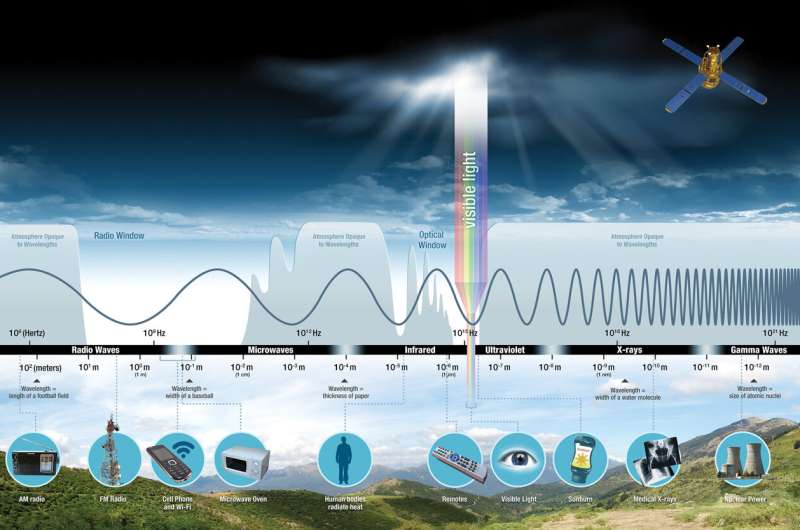
Copernical Team
Xplore acquires Major Tom cloud-based mission operation software and Kubos flight software
 Xplore Inc., a commercial space company providing Space as a Service, has announced it has acquired the assets of Kubos Corporation and its Major Tom mission and flight control software platform for satellites.
Major Tom enables mission operations for more than a dozen satellites currently on orbit for commercial and government customers. In a seamless transition to Xplore, key Kubos emplo
Xplore Inc., a commercial space company providing Space as a Service, has announced it has acquired the assets of Kubos Corporation and its Major Tom mission and flight control software platform for satellites.
Major Tom enables mission operations for more than a dozen satellites currently on orbit for commercial and government customers. In a seamless transition to Xplore, key Kubos emplo Lockheed Martin releases open-source interface standard for on-orbit docking
 Lockheed Martin has released an open-source, non-proprietary interface standard to support on-orbit docking within the industry.
With unity of effort in mind, Lockheed Martin has published this Mission Augmentation Port (MAP) interface standard online to support industry approaches to on-orbit servicing and mission augmentation. Those interested in incorporating the standard in their space
Lockheed Martin has released an open-source, non-proprietary interface standard to support on-orbit docking within the industry.
With unity of effort in mind, Lockheed Martin has published this Mission Augmentation Port (MAP) interface standard online to support industry approaches to on-orbit servicing and mission augmentation. Those interested in incorporating the standard in their space SwRI's Space System Integration Facility supports smallsat development
 Southwest Research Institute has added a new, 74,000-square-foot Space System Integration Facility to its San Antonio headquarters. The SwRI facility can rapidly respond to customers needing to design, assemble and test spacecraft, particularly small satellites for emerging "new space" applications, including support for the commercial and U.S. Department of Defense arenas. The building is sched
Southwest Research Institute has added a new, 74,000-square-foot Space System Integration Facility to its San Antonio headquarters. The SwRI facility can rapidly respond to customers needing to design, assemble and test spacecraft, particularly small satellites for emerging "new space" applications, including support for the commercial and U.S. Department of Defense arenas. The building is sched Kleos launches Patrol Mission satellites
 Kleos Space S.A, (ASX: KSS, Frankfurt: KS1) a space-powered Radio Frequency Reconnaissance data-as-a-service (DaaS) company, successfully launched its third satellite cluster, the Patrol Mission on 01 April 2022 onboard the Transporter-4 SpaceX mission.
The D-Orbit Orbital Transfer Vehicle carrying the four Patrol Mission satellites has been successfully deployed into a 500km Sun Synchrono
Kleos Space S.A, (ASX: KSS, Frankfurt: KS1) a space-powered Radio Frequency Reconnaissance data-as-a-service (DaaS) company, successfully launched its third satellite cluster, the Patrol Mission on 01 April 2022 onboard the Transporter-4 SpaceX mission.
The D-Orbit Orbital Transfer Vehicle carrying the four Patrol Mission satellites has been successfully deployed into a 500km Sun Synchrono Early Universe bristled with starburst galaxies
 In the first few billion years after the Big Bang, the universe contained far more so-called starburst galaxies than models predict. As many as 60 to 90 percent of the stars in the early universe appear to have been produced by galaxies undergoing a growth spurt. This is what an analysis of more than 20,000 distant galaxies show. The team, led by astronomers from University of Groningen (the Net
In the first few billion years after the Big Bang, the universe contained far more so-called starburst galaxies than models predict. As many as 60 to 90 percent of the stars in the early universe appear to have been produced by galaxies undergoing a growth spurt. This is what an analysis of more than 20,000 distant galaxies show. The team, led by astronomers from University of Groningen (the Net Prenatal protoplanet upends planet formation models
 An international research team has discovered a new planet so young that it has yet to emerge from the womb of matter where it is forming. This is the youngest protoplanet discovered to date.
It's location and the surrounding patterns of matter suggest that an alternative method of planet formation may be at work. This discovery could help to explain the histories and features of extrasola
An international research team has discovered a new planet so young that it has yet to emerge from the womb of matter where it is forming. This is the youngest protoplanet discovered to date.
It's location and the surrounding patterns of matter suggest that an alternative method of planet formation may be at work. This discovery could help to explain the histories and features of extrasola Hubble finds a planet forming in an unconventional way
 NASA's Hubble Space Telescope has directly photographed evidence of a Jupiter-like protoplanet forming through what researchers describe as an "intense and violent process." This discovery supports a long-debated theory for how planets like Jupiter form, called "disk instability."
The new world under construction is embedded in a protoplanetary disk of dust and gas with distinct spiral str
NASA's Hubble Space Telescope has directly photographed evidence of a Jupiter-like protoplanet forming through what researchers describe as an "intense and violent process." This discovery supports a long-debated theory for how planets like Jupiter form, called "disk instability."
The new world under construction is embedded in a protoplanetary disk of dust and gas with distinct spiral str Shake and Bake as NASA's Psyche tested in spacelike conditions
 To prepare for its launch in August, the Psyche spacecraft was tested to ensure it can operate in the extreme conditions it will face on its trip to a metal-rich asteroid.
The conditions that a NASA spacecraft endures are extreme: the violent shaking and cacophony of a rocket launch, the jolt of separating from the launch vehicle, the extreme temperature fluctuations in and out of the Sun'
To prepare for its launch in August, the Psyche spacecraft was tested to ensure it can operate in the extreme conditions it will face on its trip to a metal-rich asteroid.
The conditions that a NASA spacecraft endures are extreme: the violent shaking and cacophony of a rocket launch, the jolt of separating from the launch vehicle, the extreme temperature fluctuations in and out of the Sun' Axiom-1 targets Friday for ISS launch after NASA delays moon rocket test
 Axiom Space announced it would delay its first private astronaut mission to the International Space Station to no earlier than Friday, April 8.
If all goes as planned, a previously-flown Falcon 9 rocket will ferry four private citizens, strapped inside a SpaceX Crew Dragon capsule, to the space station. Liftoff is scheduled for 11:17 a.m. EDT.
The mission was scheduled for Wednes
Axiom Space announced it would delay its first private astronaut mission to the International Space Station to no earlier than Friday, April 8.
If all goes as planned, a previously-flown Falcon 9 rocket will ferry four private citizens, strapped inside a SpaceX Crew Dragon capsule, to the space station. Liftoff is scheduled for 11:17 a.m. EDT.
The mission was scheduled for Wednes NASA uses moonlight to improve satellite accuracy

NASA's airborne Lunar Spectral Irradiance, or air-LUSI, flew aboard NASA's ER-2 aircraft from March 12 to 16 to accurately measure the amount of light reflected off the Moon. Reflected moonlight is a steady source of light that researchers are taking advantage of to improve the accuracy and consistency of measurements among Earth-observing satellites.
"The Moon is extremely stable and not influenced by factors on Earth like climate to any large degree. It becomes a very good calibration reference, an independent benchmark, by which we can set our instruments and see what's happening with our planet," said air-LUSI's principal investigator, Kevin Turpie, a research professor at the University of Maryland, College Park.





























